The Definitive Guide to the Origins of Teak Wood and History of Teak Furniture
LEARN HUB
History of Teak Wood Furniture Indonesia
TEAK WOOD PRODUCTION
From coastal beach resorts to luxurious private residences. The warm, distinct allure of teak wood furniture has graced homes for centuries. This remarkable tropical hardwood boasts unmatched natural advantages, including:
Incredible durability and weather resistance
- High natural oil content which repels moisture
- Superior dimensional stability compared to other woods
- Rich, warm hues and unique grain patterns
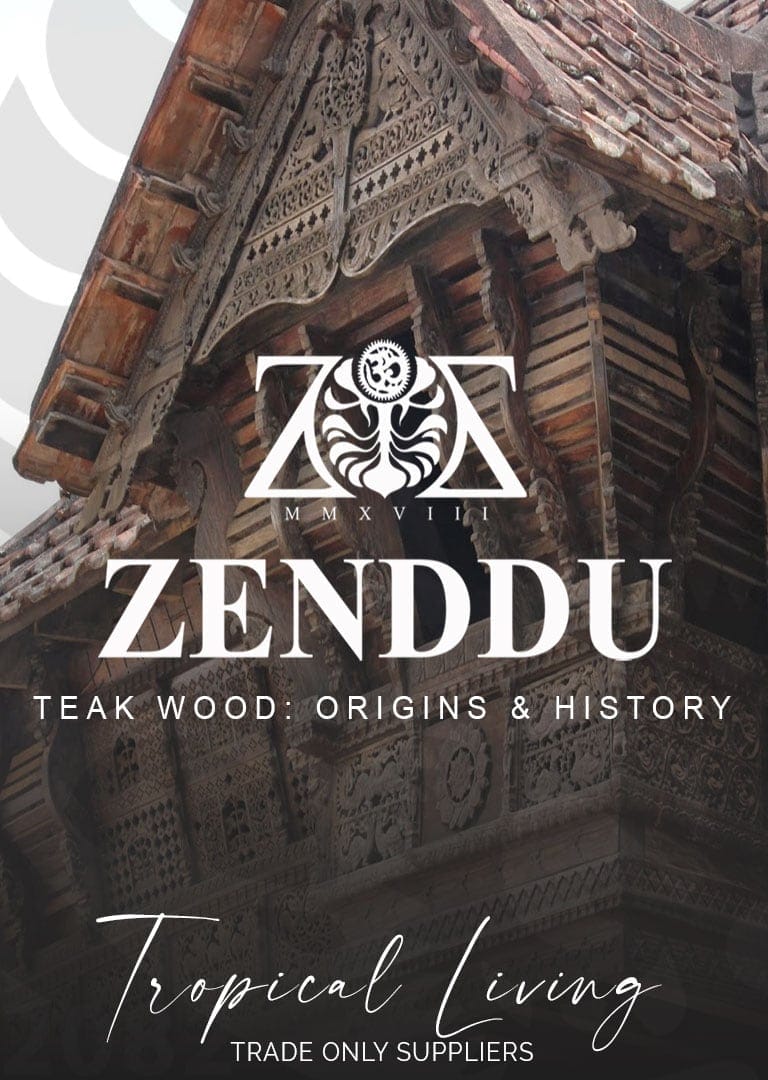
Discover the fascinating origins and history of teak wood
Beyond its outstanding physical properties, teak holds a rich history and cultural significance across Southeast Asia. At Zenddu, our team of craftspeople draws upon this heritage, ethically sourcing premium teak lumber from sustainably managed plantations to handcraft our Indonesian indoor and outdoor teak furniture collections.
In this definitive guide, we’ll explore:
- Ancient civilizations’ traditional uses of this prized wood
- How teak’s global demand grew through shipbuilding and trade
- The development of modern plantations and teak forestry practices
- What makes teak so uniquely suited for fine indoor/outdoor furniture
- Ensuring your teak furniture’s beauty lasts for generations
So take a seat, and let’s delve into the rich origins and history behind this exceptional tropical hardwood.
Teak's Native Origins in Southeast Asia
Teak Originates in Asia
TEAKS ORIGINS
Teak is indigenous to the rainforests and monsoon climates of Southeast Asia. Its natural habitat stretches across parts of India, Myanmar, Thailand, and Indonesia. Coinciding with the very regions renowned for their ancient teak craftsmanship and construction.
In its native range, teak thrives best at low elevations with:
- Hot and humid tropical climates
- Dry seasons and distinct monsoon periods
- Well-drained, fertile alluvial soils
- Dense canopy shade in early growth stages
Timber from these indigenous teak forests is extremely prized for its tight grain. Also, its rich natural oils, and strikingly beautiful patterns and figuring. Yet, centuries of exploitation have decimated many of the original teak forests.
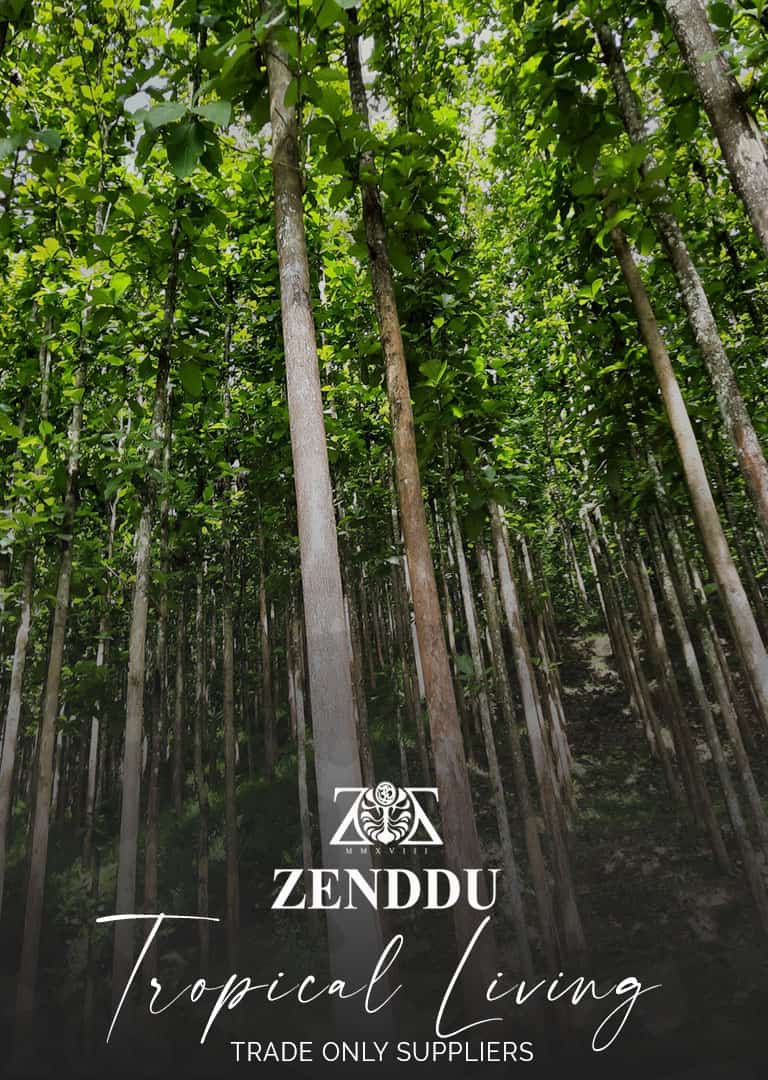
To combat deforestation and preserve remaining old-growth habitats. Sustainable forestry practices like rotational harvesting, selective thinning, and strategic replanting emerged. This allowed the development of commercial teak plantations. That could be cultivated specifically for wood production.
Today, the majority of internationally traded teak hails from these well-managed plantations across:
- Indonesian islands of Java, Sumatra, and Sulawesi
- Central and Southern India
- Northern Thailand
Indonesian teak still possesses the signature qualities that make teak so valuable. Durability, weather resistance, and dimensional stability.
Responsible forestry operations aim to meet demand while preserving precious old-growth teak habitats. With proper forest management, Southeast Asia’s treasured “wood of the ages” can continue.
Teak's Roots in Ancient Civilizations
Teak has been used through the centuries
EARLY CIVILIZATION
While teak’s origins are concentrated in Southeast Asia. Evidence of human civilizations utilizing this incredible wood dates back millennia. across the entire region. Teak’s unique properties lend it perfectly to demanding applications. Shipbuilding, construction, carving, and more.
Some of the earliest known examples include:
6th Century Shipwrecks. Remnants of teak vessels discovered in the Arabian Sea and Indian Ocean. indicating Indian Ocean teak trade routes established by the 6th century.
7th Century Architecture. Intricately carved teak was found in Southeast Asian temples. The Shwezigon Pagoda in Myanmar. Demonstrates advanced woodworking mastery.
Historic Teak Bridges. Several still-standing structures, like the 850-year-old Phandau Village Teak Bridge in Myanmar. Show teak’s durability.
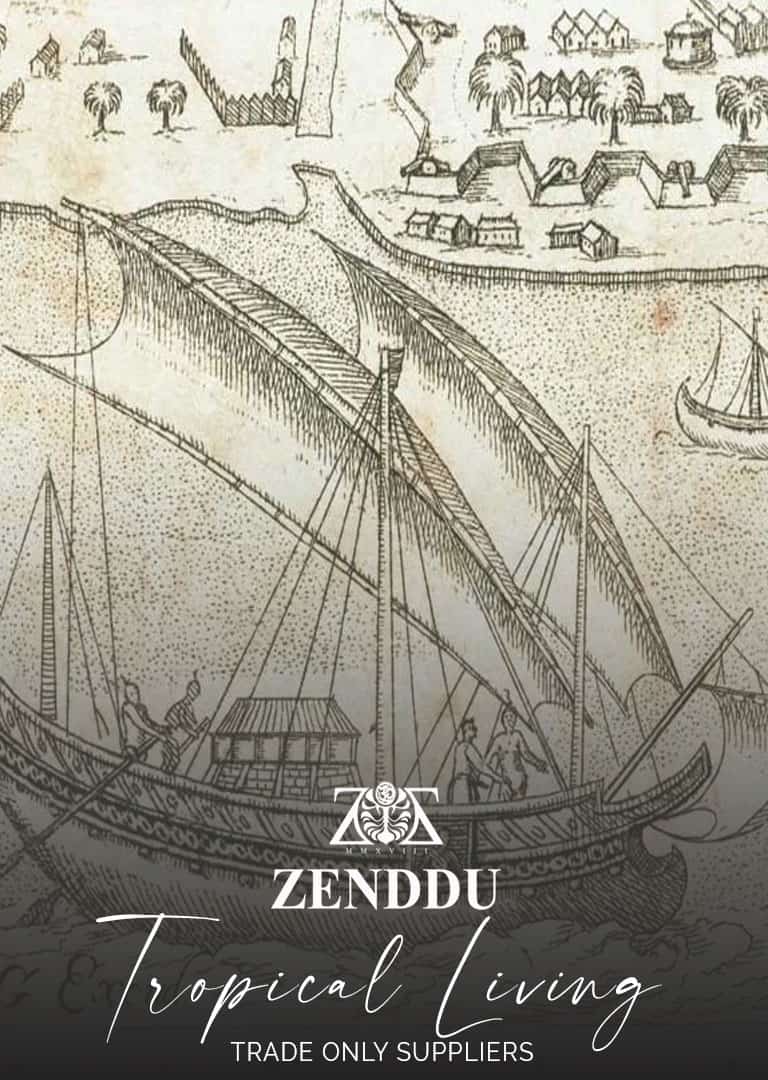
Beyond its practical applications, teak held symbolic and spiritual significance. For many indigenous groups, the tree was regarded as sacred. with teak wood being favored for idols, temples, sculptures, and religious ceremonies.
This prized and revered status lasted for generations. Eventually fueling global exploration and teak trade by European colonial powers.
In regions like Thailand, Myanmar, and Java. Traditional teak artisans developed meticulous joinery and carving techniques. Constructing ornate wooden temples, palaces, and furniture pieces entirely from the hardy wood. This mastery gave rise to distinctive regional furniture styles.
While Indonesian craftsmen built upon these foundations. Their teak furniture pieces evolved to incorporate both modern and traditional elements. At Zenddu, we strive to fuse that timeless artistry with updated, tropical-style designs.
Teak has remained the gold standard for quality for generations. It fueled trade across oceans in the search for more of this precious material.
Teak's Role in Shipbuilding and Colonial Expansion
The quest for the Durability of teak wood
Colonial Expansion
As centuries passed, knowledge of teak’s superior properties for shipbuilding spread. Its unmatched durability, dimensional stability, and resistance to moisture. Made it the ideal material. for everything from hull planking and decks to trim and structural beams.
This global demand for teak played a major role in driving colonial expansion. By European powers into Teak’s native regions, especially during the 15th-18th centuries.

The quest for teak wood factored into key historical developments:
1511: The Portuguese established a foothold in India. Securing access to prized Indian teak supplies
1600s: The Dutch East India Company took control of teak forests across Indonesia. To source wood for their massive fleets
1758: After the British East India Company captured territories of Burma (modern-day Myanmar). They rapidly exploited the dense, old-growth teak reserves
1767: Danish settlements were founded on the Nicobar Islands.
With insatiable demand from growing navies and merchant ships. Colonial forestry operations depleted many native teak stands, nearly exhausting some regions. This overconsumption was a major driving force behind more sustainable plantation teak management.
Teak’s increasing demand was fueled by its utility for fine furniture. Construction materials, and other applications were prized by the European upper classes. Colonial powers rapidly established teak logging centers and trading routes across Southeast Asia.
Indonesian teak became one of the largest supplies through the Dutch East Indies. Our teak plantations today carry on that deep tradition in an environmentally-conscious manner.
Teak played an huge role in driving exploration, colonization, for centuries. – laying the groundwork for the vast modern teak industry and demand that continues today.
The Emergence of Plantation Teak Forestry
Introduction of Controlled Plantations
TEAK SUSTAINABILITY
Teak’s once-abundant natural stands in Southeast Asia were heavily depleted. By the early 20th century. A more sustainable approach was critically needed to preserve this valuable resource.
This sparked the rise of dedicated commercial teak plantations. These specialized forestry management techniques focused on long-term cultivated growth.
Some key developments include:
Dutch East Indies Plantations (1847). The Dutch became pioneers in Indonesia. Establishing one of the world’s first large-scale teak plantations on Java.
Teak Plantations in British India (1865). Overseeing major teak operations across Burma. The British initiated vast plantation programs in central and southern India.
Regeneration Research (early 1900s). Scientists studied teak’s life cycle, seeds, soil needs, and more. Optimizing plantation growing techniques and sustainability.
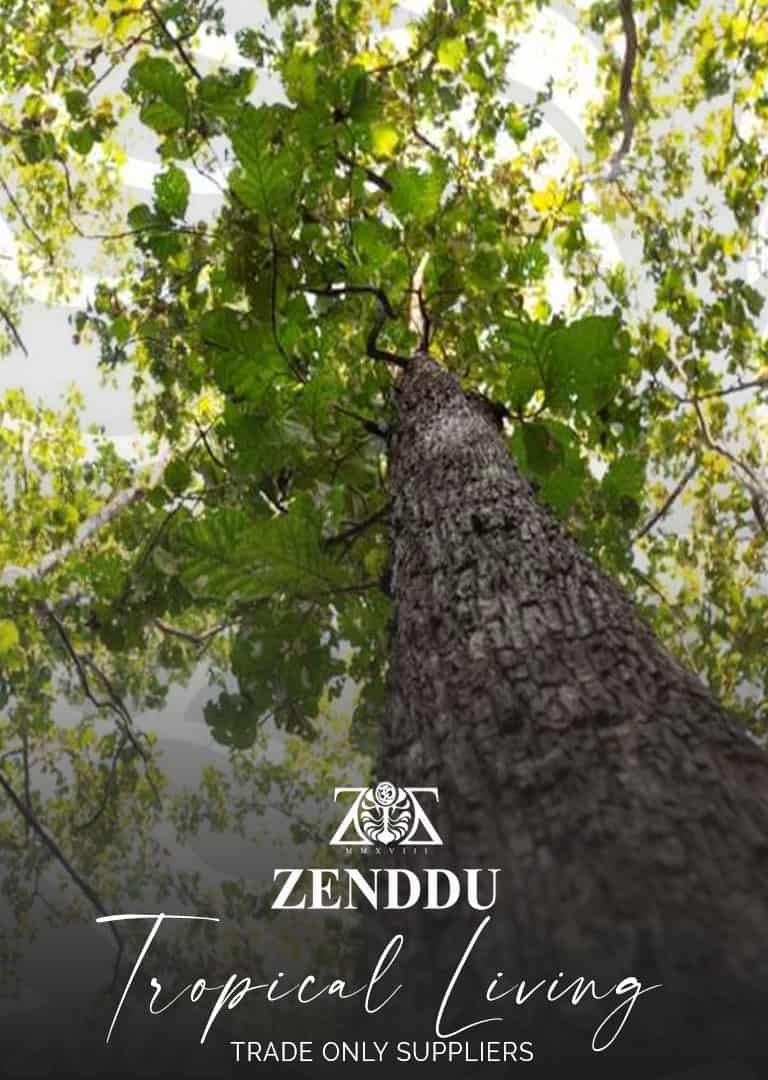
These operations came from a primarily wild-harvested resource. Into a plantation crop produced at scale. Superior forestry practices like:
Soil enrichment and drainage optimization
Selective breeding and genetic improvements
Carefully managed spacing and pest control
Rotational harvesting and restocking cycles
Allowing teak to be cultivated and replenished for generations without depleting native forests. This vital balance continues today.
While plantation teak may not have the same rich graining as old-growth timber. Its timber remains vastly superior for most construction and furniture applications. Proper forestry management allows Teak’s legacy to thrive sustainably.
At Zenddu, we partner only with Indonesian plantations that are certified. Who follow environmentally and socially responsible practices. Our customers enjoy quality teak while preserving precious forestlands.
Through thoughtful cultivation and harvesting. The modern teak industry has transformed to keep this prized tropical hardwood available.
Teak's Lasting Legacy in the Modern Era
teak in the 21st century
THE FUTURE OF TEAK
After centuries of cementing its reputation throughout the world. Teak remains one of the most sought-after premium woods on the planet. Its unique properties make teak highly versatile. From fine indoor furnishings to durable outdoor pieces and construction materials.
While Burma (Myanmar) was historically revered for its dense old-growth stands. Today, teak is supplied through carefully cultivated plantations in other regions:
Indonesia: with vast estates on islands like Java and Sumatra. Indonesia is the world’s top teak exporter.
India: Indian teak production spans plantations and private lands. From across southern states like Kerala and Tamil Nadu.
Other Regions: Smaller-scale operations in Thailand and Vietnam
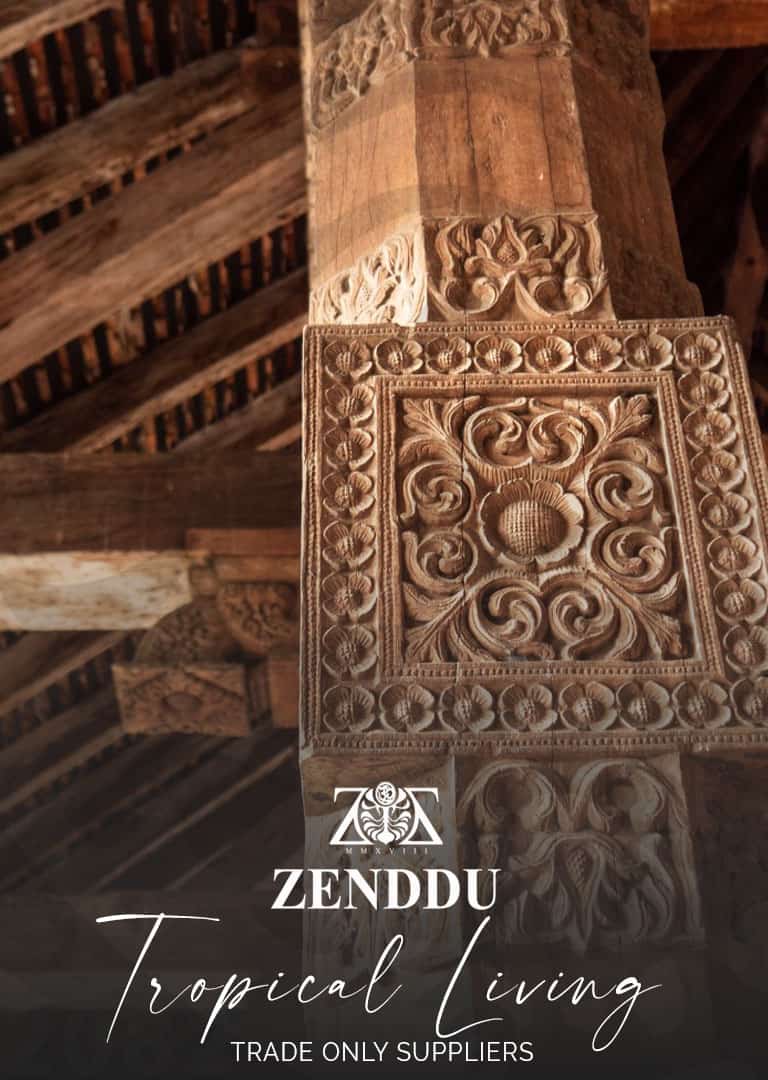
However, illegal teak logging across Southeast Asia still threatens precious native habitats. To combat this, many nations instituted teak export laws and certification programs. For example, the Indonesian SVLK to verify legal and sustainable sourcing.
These efforts aim to preserve rapidly depleting old-growth teak stands for future generations. Ensuring responsible forestry practices.
In addition to traditional uses like shipbuilding and construction. Teak’s versatility sees it employed in a wide range of modern applications, including:
Outdoor Furniture & Decking
Architectural Millwork & Cabinetry
Hardwood Flooring & Timber Framing
Musical Instrument Components
Carvings, Art & Decorative Objects
At Zenddu, we handcraft our luxury Indonesian indoor and outdoor teak furniture. We use sustainably sourced plantation stocks that are expertly kiln-dried for optimal performance.
Many countries recognize teak’s economic, cultural, and environmental value. Its future rests on conscientious teak forestry management.
Only then can this treasured tropical wood continue gracing our lives for generations.
Note: Zenddu’s wood comes from government-controlled plantations. It comes with an SVLK (v-legal) certificate.
REGISTER NOW TO SEE ALL OUR PRODUCTS
Please complete our catalogue registration form. To get access to our online catalogue. With our full range of over 12,000 products.
You will get immediate access. To access in the future visit our homepage www.zenddu.com and log in using the password provided at any time.
We will also send you information on any new products and the latest industry news.
Our Friendly AI Support
CHAT WITH ZENA
Meet Zena, our AI Customer support. She is available 24/7. She speaks over 95 languages, you can chat with her in any language.
She can answer basic questions like Do you have a catalogue and price list? or technical questions. Like the specification of any raw material, or the cubic capacity of a container. If you planning on visiting Indonesia she can also suggest places to visit during your stay.
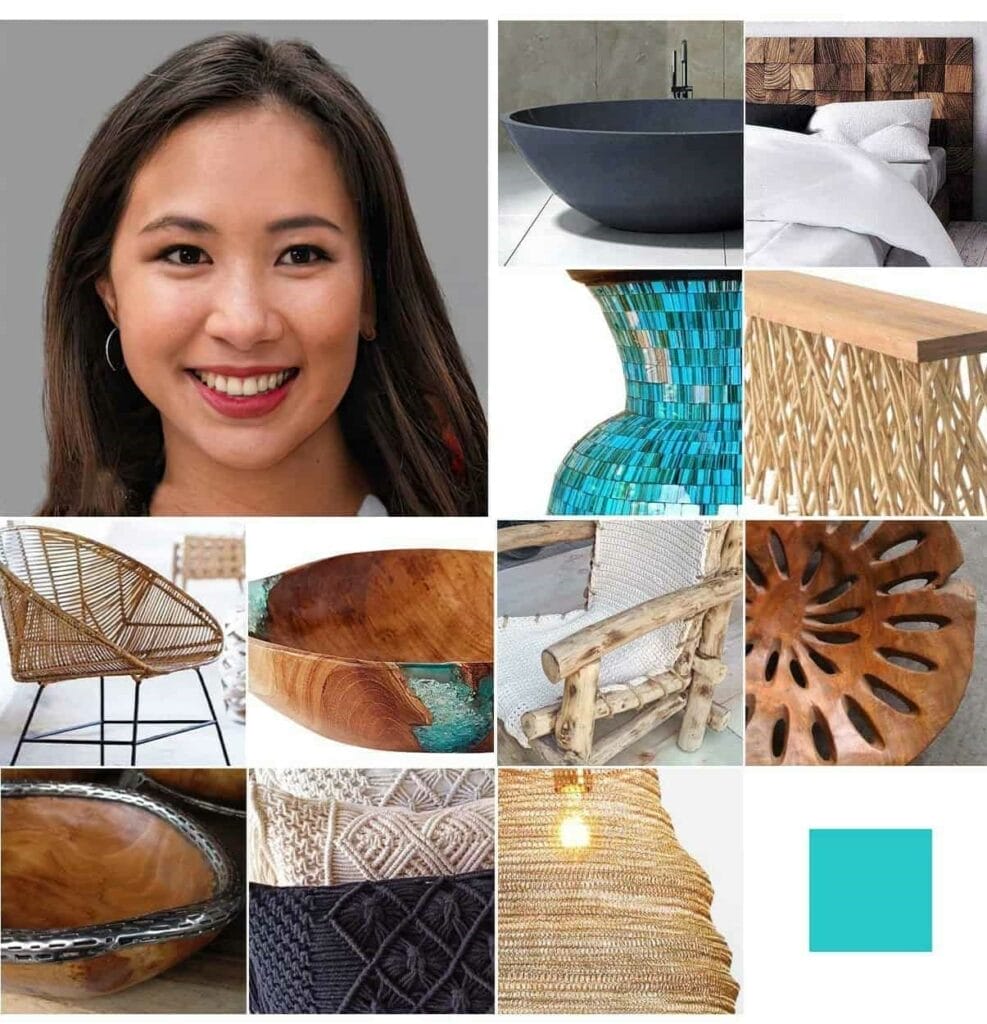
If you ask her personal questions like, How old are you? Do you like your job? What’s your salary? Do you have a boyfriend? Who is Zendy? She can be a little sarcastic, depending on her mood.
She is very knowledgeable and friendly. Chat with her! Use the chat button in the bottom right-hand corner.
FURTHER READING
USEFUL LINKS
World Trade Organization (WTO)
International Trade Centre (ITC)
United Nations Conference on Trade and Development (UNCTAD)
Asia-Pacific Economic Cooperation (APEC)
International Trade Administration
European Free Trade Association (EFTA)
Association of Southeast Asian Nations (ASEAN)
Indonesian Ministry of Trade (Kementerian Perdagangan)
Indonesian Directorate General of Customs and Excise (Bea Cukai)
Watch our videos with information about us, our services to retailers and for hospitality projects, what custom made products we can make and our quality control processes.
YOUR SUPPLY PARTNER IN INDONESIA
Looking for new products for your store or next project?
Useful link: Indonesian Ministry of Trade

